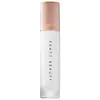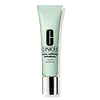What's inside
What's inside
 Key Ingredients
Key Ingredients

 Benefits
Benefits

 Concerns
Concerns

 Ingredients Side-by-side
Ingredients Side-by-side

Water
Skin ConditioningDimethicone
EmollientIsononyl Isononanoate
EmollientPolypropylene
Cetyl PEG/PPG-10/1 Dimethicone
EmulsifyingPentylene Glycol
Skin ConditioningIsododecane
EmollientNylon-12
Polymethyl Methacrylate
Hdi/Trimethylol Hexyllactone Crosspolymer
Maltose
MaskingPhenoxyethanol
PreservativeSodium Chloride
MaskingDimethicone/Vinyl Dimethicone Crosspolymer
Skin ConditioningMagnesium Sulfate
Ethylhexylglycerin
Skin ConditioningDisteardimonium Hectorite
StabilisingAgave Tequilana Leaf Extract
AstringentDimethiconol
EmollientSilica
AbrasivePropylene Carbonate
SolventParfum
MaskingBiosaccharide Gum-4
Skin ConditioningTocopherol
AntioxidantWater, Dimethicone, Isononyl Isononanoate, Polypropylene, Cetyl PEG/PPG-10/1 Dimethicone, Pentylene Glycol, Isododecane, Nylon-12, Polymethyl Methacrylate, Hdi/Trimethylol Hexyllactone Crosspolymer, Maltose, Phenoxyethanol, Sodium Chloride, Dimethicone/Vinyl Dimethicone Crosspolymer, Magnesium Sulfate, Ethylhexylglycerin, Disteardimonium Hectorite, Agave Tequilana Leaf Extract, Dimethiconol, Silica, Propylene Carbonate, Parfum, Biosaccharide Gum-4, Tocopherol
Cyclopentasiloxane
EmollientDimethicone
EmollientHdi/Trimethylol Hexyllactone Crosspolymer
Silica
AbrasiveIsononyl Isononanoate
EmollientIsododecane
EmollientDimethicone/Vinyl Dimethicone Crosspolymer
Skin ConditioningVinyl Dimethicone/Methicone Silsesquioxane Crosspolymer
Polymethyl Methacrylate
Lauroyl Lysine
Skin ConditioningHydrolyzed Soy Protein
HumectantEthylhexylglycerin
Skin ConditioningStearyl Glycyrrhetinate
Skin ConditioningPhytosteryl/Octyldodecyl Lauroyl Glutamate
Skin ConditioningMethicone
EmollientTocopheryl Acetate
AntioxidantCoconut Acid
CleansingWater
Skin ConditioningPhenoxyethanol
PreservativeMica
Cosmetic ColorantCI 77891
Cosmetic ColorantCI 77492
Cosmetic ColorantCI 77491
Cosmetic ColorantCI 77499
Cosmetic ColorantCI 75470
Cosmetic ColorantCyclopentasiloxane, Dimethicone, Hdi/Trimethylol Hexyllactone Crosspolymer, Silica, Isononyl Isononanoate, Isododecane, Dimethicone/Vinyl Dimethicone Crosspolymer, Vinyl Dimethicone/Methicone Silsesquioxane Crosspolymer, Polymethyl Methacrylate, Lauroyl Lysine, Hydrolyzed Soy Protein, Ethylhexylglycerin, Stearyl Glycyrrhetinate, Phytosteryl/Octyldodecyl Lauroyl Glutamate, Methicone, Tocopheryl Acetate, Coconut Acid, Water, Phenoxyethanol, Mica, CI 77891, CI 77492, CI 77491, CI 77499, CI 75470
Ingredients Explained
These ingredients are found in both products.
Ingredients higher up in an ingredient list are typically present in a larger amount.
Dimethicone is a type of synthetic silicone created from natural materials such as quartz.
What it does:
Dimethicone comes in different viscosities:
Depending on the viscosity, dimethicone has different properties.
Ingredients lists don't always show which type is used, so we recommend reaching out to the brand if you have questions about the viscosity.
This ingredient is unlikely to cause irritation because it does not get absorbed into skin. However, people with silicone allergies should be careful about using this ingredient.
Note: Dimethicone may contribute to pilling. This is because it is not oil or water soluble, so pilling may occur when layered with products. When mixed with heavy oils in a formula, the outcome is also quite greasy.
Learn more about DimethiconeThis ingredient is a silicone used to improve the texture of products and absorb oil. It does not get absorbed into the skin.
Like other silicones, Dimethicone/Vinyl Dimethicone Crosspolymer helps condition the skin by creating a barrier. In this sense, it can act as an emollient and trap moisture in.
This ingredient is a type of elastomer.
Learn more about Dimethicone/Vinyl Dimethicone CrosspolymerEthylhexylglycerin (we can't pronounce this either) is commonly used as a preservative and skin softener. It is derived from glyceryl.
You might see Ethylhexylglycerin often paired with other preservatives such as phenoxyethanol. Ethylhexylglycerin has been found to increase the effectiveness of these other preservatives.
This ingredient is a powder used to improve texture, slip, and give products a silky texture.
Isododecane is a fragrance, emollient, and solvent.
As an emollient, it helps your skin stay soft and hydrated. Emollients help trap moisture into your skin.
Isododecane's role as a solvent makes it a great texture enhancer. It spreads smoothly on skin and does not leave a sticky feeling behind. Isododecane also helps prevent color transfer in makeup products.
Isododecane is not absorbed into skin.
Learn more about IsododecaneIsononyl Isononanoate is a synthetic skin-conditioner and texture enhancer. It is created from nonanoic acid, a fatty acid found in cocoa and lavender oil.
As an emollient, Isononyl Isononanoate helps keep your skin soft and smooth. This is because emollients create a barrier on the skin to trap moisture in.
Isononyl Isononanoate helps give products a velvet feel and improves spreadability.
Learn more about Isononyl IsononanoatePhenoxyethanol is a preservative that has germicide, antimicrobial, and aromatic properties. Studies show that phenoxyethanol can prevent microbial growth. By itself, it has a scent that is similar to that of a rose.
It's often used in formulations along with Caprylyl Glycol to preserve the shelf life of products.
This ingredient is also known as PMMA. It is a polymer microsphere, composed of tiny, perfectly spherical particles formed from repeating units.
In cosmetics, PMMA is mainly used to give a soft or blurring effect. The transparent particles are able to scatter light and help reduce the appearance of fine-lines and imperfections.
PMMA is also able to enhance the texture of products by add a smooth feel.
Learn more about Polymethyl MethacrylateSilica, also known as silicon dioxide, is a naturally occurring mineral. It is used as a fine, spherical, and porous powder in cosmetics.
Though it has exfoliant properties, the function of silica varies depending on the product.
The unique structure of silica enhances the spreadability and adds smoothness, making it a great texture enhancer.
It is also used as an active carrier, emulsifier, and mattifier due to its ability to absorb excess oil.
In some products, tiny microneedles called spicules are made from silica or hydrolyzed sponge. When you rub them in, they lightly polish away dead skin layers and enhance the penetration of active ingredients.
Learn more about SilicaWater. It's the most common cosmetic ingredient of all. You'll usually see it at the top of ingredient lists, meaning that it makes up the largest part of the product.
So why is it so popular? Water most often acts as a solvent - this means that it helps dissolve other ingredients into the formulation.
You'll also recognize water as that liquid we all need to stay alive. If you see this, drink a glass of water. Stay hydrated!
Learn more about Water